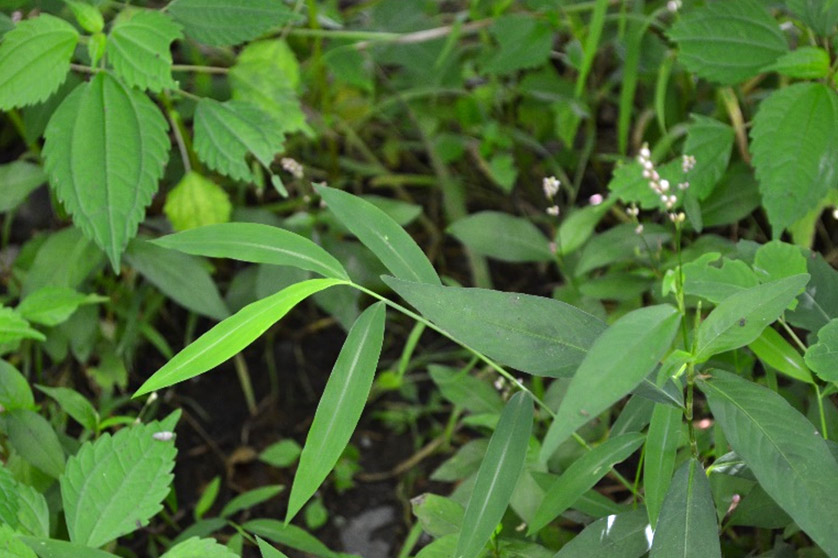Japanese Stiltgrass

Photo: Joan Deely – Leaves of Japanese stiltgrass with characteristic pale stripe.
Japanese Stiltgrass (Microstegium vimineum) is an annual grass that germinates in the spring, flowering and setting seed from mid-September through October.
Leaves of stiltgrass have a distinctive silvery stripe of reflective hairs along the midrib of each narrow, lance-shaped blade that distinguishes it from co-occurring grasses. Stilt-like root material extending from the lowest nodes of the stem gives the grass its common name.
First recorded in Tennessee in 1919, it apparently was used as packing material used in shipments of ceramics from Asia.
Japanese stiltgrass tends to prefer moist soils. The seeds, which can remain viable in soil for up to five years, can also float, so are easily spread along waterways.
It is often found along trails and roads, where its tiny seeds are transported on hikers’ shoes, cars, ATVs, and logging and road maintenance equipment.
Once established, it rapidly creates a uniform understory in woodlands and damp areas and is very difficult to remove. Infestations of stiltgrass prevent native plant regeneration and reduce wildlife habitat by creating a monoculture.

Photo: Bcbaker 2390 – Own work, CC BY-SA 3.0

Photo: Joan Deely – Leaves of Japanese stiltgrass with characteristic pale stripe.

Photo: Joan Deely – Japanese stiltgrass’s characteristic color in the fall.
Swallowwort
Olive
Mustard
Stiltgrass
